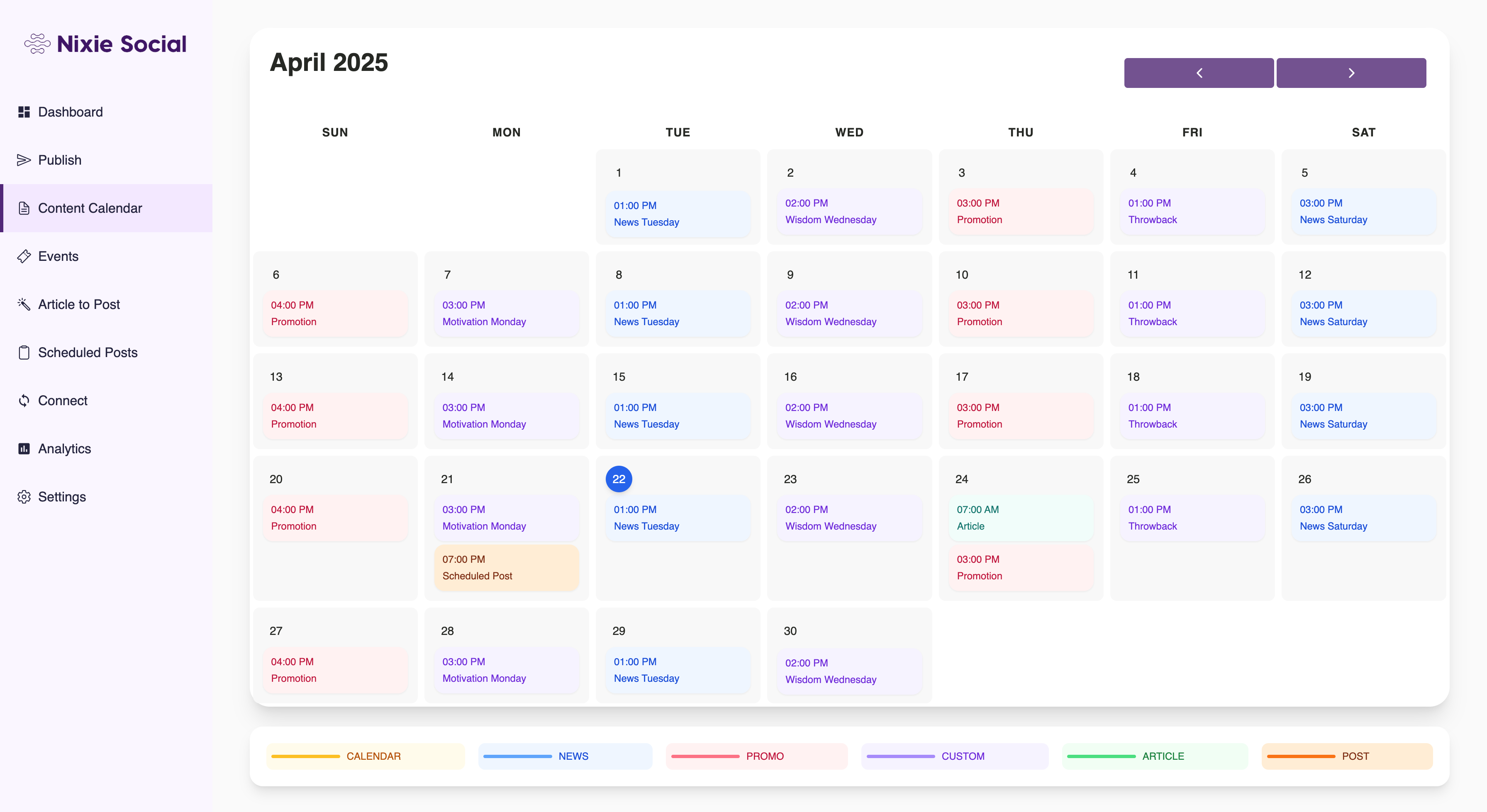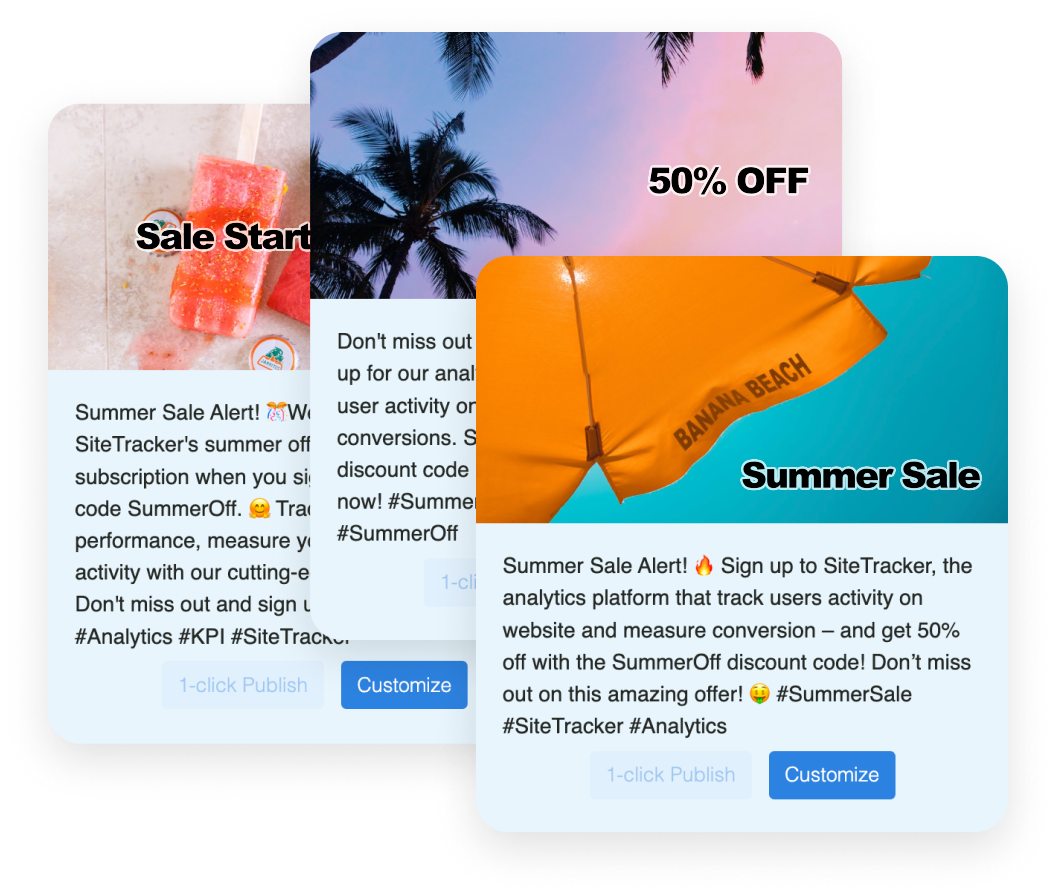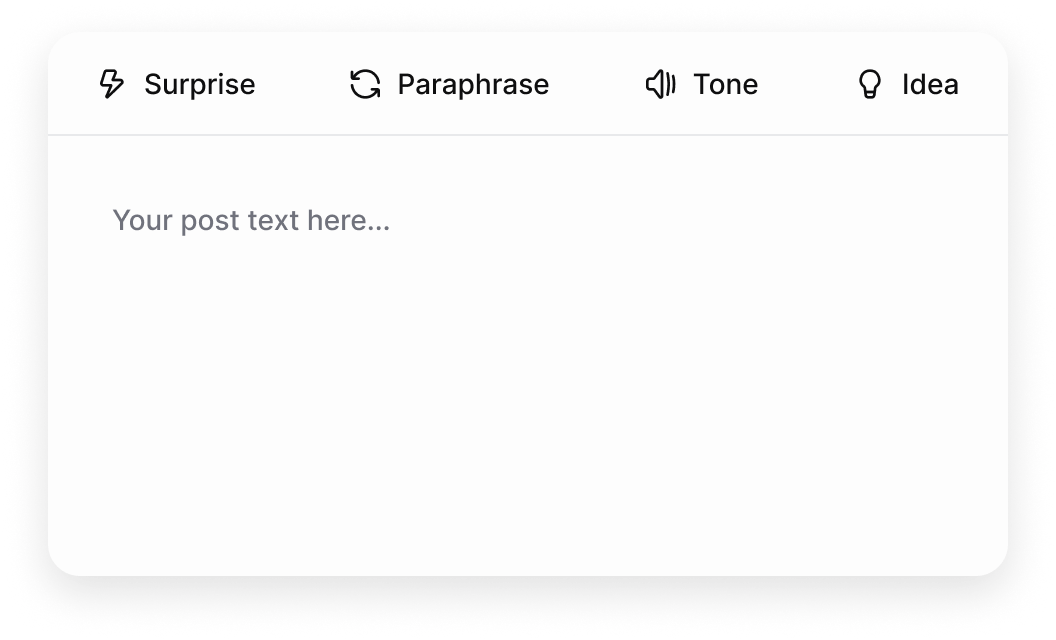Grow Your Social Mediaon autopilot
Powered by AI.
Supercharge Your Online Presence with Fast, Cost-Effective,
and Tailored Content—Automatically Published to Your Accounts.
Integrated with 

Time-Saving
Industry Specific Content
Bring Convenience
Budget-friendly

We're Here To Solve It
Capture Business Details
The AI agent will scrape your website to capture the essence of their brand. This way we personalize our services to meet your needs.
Content Calendar
Nixie crafts a custom content plan for every day of the week. It offers three types: Calendar events, Industry-specific news, or Promotional content.
Publish Automatically
Modify received content using our AI assistant. Then, easily post it or schedule content to Instagram and Facebook.
What to Expect

Tailored Content
The assistant generates ready-to-post content and plans a content calendar for you. Our AI assistant curates the combination of caption and image based on the business detail and event type.
AI Editor
Need to customize the content? Do it with a single click. Or, rewrite the caption based on an idea or media file. You save time, ensuring that content is fresh, relevant, and engaging.


Analytics
Analytics monitors the reach, impressions, and profile views over time. You compare different channels to see which one performs better.
Choose What Fits You
Experience the difference for FREE.
Try 30 days trial!
Available Channels: Instagram Facebook Page
Monthly
Yearly
2 months free
Essential
$19.99/mo
billed monthly
Receive content suggestions with easy-to-use toolsets for further personalization.
1 account per channel
Daily content
AI-enabled content editor
AI Image creator
Try 30 Days Free
Professional
$29.99/mo
billed monthly
Receive more content with the toolset to put it on autopilot.
Essential features, plus...
1 account per channel
1-click post across platforms
Scheduling posts
Integrated analytics
Improved image suggestion
Try 30 Days Free
Enterprise
$149.99/mo
billed monthly
Receive ready-to-post contents, tailored for your needs.
Professional features, plus...
Multiple accounts per channel
Capture organization voice
AI image generation
Try 30 Days Free
Free SMM Guide
A free beginner guide for small businesses to start the social media journey, and leverage AI tools to reduce their workload.



